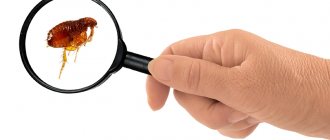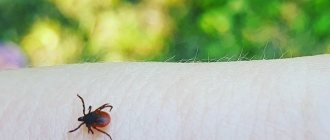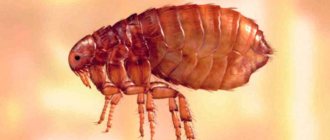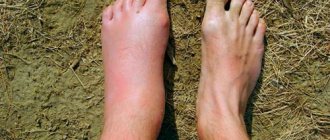Rats are one of the most common pests. Their habitat is located in densely populated cities, close to people, as this gives them constant access to food and water. Rats can attack humans and domestic animals.
The harm caused by these rodents has long been beyond doubt, because living so close to our homes, they not only spoil food, but can also gnaw wires and damage furniture and books. But some people are confident that these tailed pests are not limited to minor vandalism, but are also capable of a real deliberate attack on a person. But is this really so? We suggest you look into this issue.
Rat lifestyle
Rats are synanthropic animals that settle near people, get used to their presence and interact with humans throughout their lives. They lead an active nocturnal lifestyle to minimize contact with humans.
Most of the life of gray and black rats is spent in urban environments, where they find food and establish their existence. Omnivores, feeding not only on plants, fruits, and vegetables, but also obtaining animal protein by hunting small animals and birds, do not disdain carrion and garbage. Among many species of rats, cannibalism occurs - with prolonged fasting, they are able to eat their fellow rats.
On a note!
Because rats eat everything, including garbage, rotten waste, and animal feces, the microflora in their mouths is very diverse. Rats and their bites are dangerous because viruses and harmful bacteria enter a deep wound and with a 90% probability are capable of causing suppuration and an inflammatory process.
Is it possible to cure a pet?
Domestic rats get rabies less often than other pets, and the chances of catching the virus are reduced to zero if your pet is vaccinated annually. Fortunately, 200 years ago, the founder of immunology, Louis Pasteur, developed a vaccine against rabies that is effective on animals and people. The vaccine is effective as a means of prevention even after contact with a virus carrier. But if the infection has reached the nerve pathways, the disease cannot be cured. The only thing that can be done is to alleviate the condition with sedatives, drugs that relieve convulsions and respiratory spasms. But since death is inevitable, animals are often euthanized.
It is important for owners to isolate the rat from other animals and people, and to disinfect the place where it is kept. The virus dies at a temperature of 56 degrees in 15 minutes, and in 2 minutes at a temperature of 100 degrees
You can destroy the virus using ultraviolet light and alcohol. However, the rabies virus is not afraid of low temperatures.
Carriers of infections
The danger of rats
What is dangerous about rats and mice and their bites is that rodents are carriers of many infectious diseases, including such deadly ones as tetanus and rabies, as well as:
- leptospirosis - caused by leptospira, affecting internal organs and the nervous system, the mortality rate from it is 16% of the number of patients; the disease is manifested by high fever, pain in the head and calves, and enlarged liver;
- listeriosis – pathogenic bacteria-listeria are transmitted, especially dangerous for pregnant women, causing miscarriage;
- toxoplasmosis – when pregnant women are infected, the fetus is affected;
- yersiniosis - manifests itself as severe intoxication, affecting the gastrointestinal tract, musculoskeletal system and liver, causing severe pain in muscles, joints, head, severe diarrhea and nausea.
Do hamsters get rabies?
For some reason, many are sure that hamsters and rabies are incompatible concepts. Unfortunately, the reality is not so rosy.
Unfortunately, hamsters get rabies. And how! These animals are often carriers of a deadly, incurable disease. In 2011, a family of 4 people in the Ukrainian Zhitomir, in particular, ended up in the hospital. Everyone was bitten by a “harmless” domestic hamster. Fortunately, in that story everything ended well: the head of the family was alarmed by the sudden aggression of a previously phlegmatic pet, and he immediately went to the hospital. And saved four lives.
Cases of attacks on people
According to statistics, the number of cases of rat attacks on people is quite large. Thus, in a large city, where the number of rats often exceeds the number of residents, 400-700 rodent bites occur annually. This is why it is so important to get rid of rats.
On a note!
According to statistics, in the United States up to 14 thousand people suffer from rat bites every year, and in the world this figure exceeds 3.5 million. Every year, 2 thousand people die due to diseases transmitted by rats.
Many people are interested in the answer to the question whether a rat can attack a person on its own, without any reason. After all, there are even videos posted on the Internet with examples of such rodent aggression.
Rodent lifestyle
Rats are members of the mouse family. This genus of rodents is very widespread; its various species live throughout the globe. Several centuries ago they were not in the USA, but along with the ships of settlers the animals arrived on this continent. Today, rats are found almost everywhere humans live. The most common are 2 types of these rodents: black and gray.
Black rats are smaller in size, have lighter bodies and very tenacious fingers, due to which rodents easily make nests in attics, mezzanines, suspended ceilings and even in trees.
All rats are very fertile, they reproduce at a terrifying rate: a female gives birth to an average of 5 to 20 cubs at a time, and after 18-20 hours she is ready to mate again. That is, over a short life, the rodent increases the population by several tens of thousands of individuals. Fortunately, 95% of young animals die from cannibalism of their fellows, unfavorable climate or deratization.
Typically, pests live in populations of 200-300 individuals. At the same time, they are synanthropic, that is, they live next to a person and learn to interact with him. These pests lack spatial conservatism, meaning they easily colonize new territories.
Causes of rat aggression
Aggression of rats
The most common reasons when rats attack people:
- the animal attacks and can bite a person when there is a threat to the life of its pups or nest;
- aggression occurs in a situation when a person wants to catch a rat or kill it by driving it into a corner indoors;
- the bite occurs with the aim of satisfying the rodent’s feeling of hunger; this often happens in relation to children or sedentary adults;
- rats with rabies attack without cause.
In Russia, there are not very many cases of rat attacks, which is explained by the large amount of food that they can get without aggression or much effort. In less developed countries: in many regions of Asia, Africa, South America, incidents where a rat bites a person due to lack of food occur frequently. This is also due to the fact that the poor population catch rodents for cooking, as a result of which rats often defend themselves from hunters by jumping and biting.
Interesting!
Cases where the owner was attacked by a domestic rat during play or for the purpose of self-defense are quite common. Cats can also suffer from attacks by wild rodents, although they prefer to hunt mice.
Cute dachshund
This story happened in Russia almost 28 years ago. The country's rich people, in search of constant exotic innovations, often got a dachshund dog, which was inaccessible to average Russians.
One day, one woman bought such a dachshund for her family and, as if nothing had happened, walked down the street with it. The dog was very active and mischievous, she constantly ran along the street, sniffed out something and played. Soon children began to gather around the dachshund. She was so kind and affectionate that the owner never worried that her dog could harm others.
Rat attack
Large rodents are capable of attacking and rushing at a person completely unexpectedly, often this happens in 2 ways:
- In order to scare, a rat rushes at a person and makes a jump, emitting a squeal or squeak. The reason for such an attack is fear, when the animal is driven into a corner, and it acts in self-defense.
- Cases of attacks on sleeping people often happen to drunken or homeless people who spend the night in basements, sewers, dirty corners of gateways, which rats consider their territory. However, rumors that rats ate someone whole are greatly exaggerated.
Rats are one of the most challenging and destructive rodents in the entire world. They eat and contaminate food, damage property, and transmit parasites and diseases to other animals and humans. Rats live and thrive in a wide variety of climates and are often found in and around homes and other buildings, on farms, and in gardens and open fields.
1. Types of Rats and Their Behavior People don't often see rats, but signs of their presence are easy to spot. The most common are two types of rats: the black and gray rat; the remaining species (at least 62 species) live in Australia, Southeast Asia, and Oceania.
Brown or sewer rats are burrowing rodents with a stockier body and are larger than black rats. Their burrows are located along building foundations, under rubbish or wood piles, as well as in damp areas and around gardens and fields. The nests may be lined with shredded paper, cloth, or other fibrous material. When gray rats invade buildings, they tend to stay in the basement or basement. While they typically live at low altitudes, this species can nest wherever people live.
Black rats are slightly smaller than gray rats. Unlike gray rats, their tails are longer than their head and body combined. Black rats are agile climbers and typically live above ground in shrubs, trees and dense vegetation such as ivy. In buildings, they are most often found in enclosed spaces and on upper floors, such as attics, false ceilings and closets. The black rat has a more limited geographic range than gray rats, preferring warmer climates.
>
Video. The rat attacked and killed the pigeon
Retreat. This video shows how a rat attacked a pigeon; most likely it caught it by surprise and dragged it into the bushes. The video was filmed in 2015 in New York.
While the rat is much larger than the common house mouse or prairie vole, young rats are sometimes confused with a mouse. In general, very young rats have large heads and legs in proportion to their bodies, while adult mice have much smaller proportions. While rats and mice chew wood, rats leave much larger teeth marks than mice.
Biology and Life Cycle of Rats Rats, like house mice, are primarily active at night. They have poor eyesight, but they make up for this deficiency with a keen sense of hearing, smell, taste and touch. Rats constantly explore and study the area, remembering the location of paths, obstacles, food and water, shelter and features of their habitat. They quickly detect and try to avoid new objects and new foods. Thus, they often avoid traps and baits for several days after their initial placement. While both species avoid novel objects, neophobia is more pronounced in black rats than in gray rats.
Gray and black rats don't get along with each other. The gray rat is a larger and more dominant species and will seek to kill the black rat in combat. When two species occupy the same building, gray rats may dominate the basement and first floor, while black rats will occupy the attic or the second and third floors. Contrary to some beliefs, these two species cannot interbreed. Both species may share some food resources, but will not feed side by side. Rats may grab food and take it to another location to dine on.
Photo. Gray rats drink milk
Gray Rats Gray rats eat a wider variety of foods, but generally prefer grains, meats, fish, nuts and some fruits. When searching for food and water, gray rats typically search an area 100 to 150 feet in diameter; they rarely travel more than 300 feet from their burrows. The average female gray rat has 4 to 6 litters per year and each litter contains 20 or more pups.
Photo. Black rats
Black Rats Like gray rats, black rats eat a wide variety of foods, but they prefer fruits, nuts, berries, slugs and snails. Black rats love avocados and especially citrus fruits and often eat what else is on the tree. When they eat a ripe orange, they make a small hole through which they completely suck out the contents of the fruit, leaving only the sunken peel hanging on the tree. They often eat the lemon peel, leaving the remaining flesh of the fruit hanging. Their favorite habitats are attics, trees and shrubs or vines. Industrial or residential areas with mature landscaping provide good habitat, as does the riparian vegetation of rivers and streams. Black rats prefer to live in areas above ground and rarely dig burrows for shelter.
Black rats regularly travel up to 300 feet in search of food. They can live in landscaping and feed elsewhere. They can often be seen at night on posts or on fences. They have an excellent sense of balance and use their long tails to keep them steady while walking along utility lines. They move faster than gray rats and are very agile climbers, allowing them to quickly escape from predators. They may live in trees or attics and travel down to their food source. The average black rat typically produces 3-5 litters per year with 5-8 pups in each litter.
Damage caused by rats Rats eat and contaminate food and animal feed. They also damage containers and packaging materials in which food and feed are stored. Both species cause many problems as they chew on electrical wires and wood structures: doors, cornices, corners, and wall material and insulation; they tear apart the insulation of walls and ceilings to furnish their homes.
Gray rats can weaken the foundations of buildings due to their burrowing activity and can chew on all types of materials, including soft metals like copper and lead, as well as wood and plastic. If black rats live in the attic, they can cause a lot of damage through their chewing and nesting. They also harm garden crops and ornamental plantings.
Rats can also transmit diseases to humans and livestock, such as murine typhus, leptospirosis, salmonellosis (food poisoning) and murine fever.
2. About rat attacks on people Wild rats are synanthropic animals, whose natural habitat is in and around human buildings: farms, cities, sewers, garbage dumps. In cities, wild rats are more common, especially in areas of lower socioeconomic status.
Wild rats bite relatively rarely; even the number of bites is difficult to determine, since information about bites is greatly underestimated. Urban wild rats bite people of all ages, but they tend to bite children more often. Most bites occur at night, while a person is sleeping. Rats tend to bite parts of the body that are exposed during sleep, usually the hands and fingers.
Rat bites are usually not serious: most bites can simply be washed off and the patient can be released immediately. The infection rate from rat bites is very low, about 2%.
Very rarely, rats can transmit diseases such as mouse fever. Rats do not pose any risk of spreading rabies.
Are wild rat bites really common? It is difficult to estimate the total number of wild rat bites because animal bite statistics are generally underreported. Perhaps less than 10% of all bites required medical attention (Strasburg et al. 1981). One study found that only 41% of bites were reported to public health authorities (Beck, 1981). Even dog bites are under-reported: a study in Pennsylvania found that there were 36 times more dog bites in children ages 4 to 18 than public health officials actually knew (Beck and Jones, 1985).
Rat bites are also greatly underestimated. Visits to the homes of social service providers showed that rat bites were generally not reported by family members (Ordog et al. 1985).
However, in general, rat bites are thought to be relatively rare, even in areas where rats are common. A survey of 1,363 people in Baltimore found that nearly two-thirds of those surveyed (64 percent) reported seeing rats on streets and alleys, but only 6% reported seeing rats inside homes, and only 1.2% had been exposed to some kind of rodent (rat or mouse) bites in their lives (Childs et al., 1991).
Hirschhorn and Hodge (1999) found that rat bite rates in Philadelphia were 2.12 bites per 100,000 people per year from 1974 to 1984 and 1.39 bites per 100,000 people per year from 1985 to 1996.
Where do wild city rats live? Wild urban rats can be found around homes, alleys, sewers and zoos (Childs et al. 1991, Farhang-Azad and Southwick 1979). Rat infestations are associated with areas of low socioeconomic status (Davis 1949, Childs et al. 1991).
Photo. Sydney, Australia, 1900. These rat catchers disinfected Sydney of rats to prevent the spread of bubonic plague in the city.
Childs et al (1998) studied the environmental and social characteristics of the homes of 514 patients who had been bitten by rodents (81% of bites were from rats). The authors found that most people who were bitten lived in poor urban areas. These areas were cluttered with various blocks and beams, there was a high percentage of rental housing and housing less suitable for habitation. The population tended to have a high proportion of ethnic minorities (with the exception of Asians), a large proportion of children and a low number of people over 65 years of age.
High-risk areas tended to be near subways, abandoned stations, railroads and parks, which are potential sources of shelter and food for gray rats. However, areas near noisy traffic and stations are also characterized by equally high numbers of rats (Childs et al. 1998).
2.1. Characteristics of rat bites Comparison of men and women Women are slightly more likely to be bitten than men (51.5% of women compared to 48.5% of men, Childs et al., 1998; 58% of women and 42% of men, Ordog et al., 1985; 52% women and 48% men in 1974-1984, Hirshhorn and Hodge, 1999; 56.5% women and 42.6% men in 1985-1996, Hirshhorn and Hodge, 1999 ).
Age The average age of patients bitten by rats is usually relatively young.
Hirschhorn and Hodge (1999) studied 622 rat bites reported in Philadelphia from 1974 to 1996. The study found that rat bites primarily affected children aged five years and younger, and people over 75 years of age.
Childs et al (1998) found a range of rat bites to range from 1 year to 93 years, with the average age of the person bitten being 22 years.
Ordog et al. (1985) found that the average age of a person bitten was 10.8 years, with an age range of 5 months to 42 years. The majority (74%) of those bitten were under 15 years of age, while 45% of those bitten were under five years of age.
A study of rat bites in Baltimore between 1948-1952 found that 60.5% of victims were under six years of age. Infants who were less than one year old accounted for 24.5% of rat bite cases.
A rat bite study conducted by Richter (1945) in Baltimore from 1939 to 1943 found that 60% of rat bite victims were less than 1 year old.
Comparison by Race From 1974 to 1996, Hirschhorn and Hodge (1999) found that 50% of rat bite victims were black, 28% were white, and 22% were Asian or Hispanic. Blacks and Hispanics were at high risk for rat bites. In this group, the incidence rate among Hispanics was four times higher than among blacks.
Socioeconomic status More bites occurred in areas with families living below the poverty line, which also had the highest percentage of people unemployed. There is a strong connection between rat bites and poverty (Hirschhorn and Hodge, 1999).
Frailty and weakness Ninety percent of patients who were bitten by a rat were either children or had physical or mental disabilities such as diabetes, mental illness, intoxication, or minor wounds (Ordog et al., 1985).
Video. A huge rat attacks cats
Location of Rat Bites All rat bites occurred in patients' homes (Ordog et al., 1985). Hirschhorn and Hodge (1999) found that 92% of bites occurred in the home (67% private residences, 25% communal), while the remaining 8% of bites occurred in other settings (eg, research laboratories and schools).
Hirschhorn and Hodge (1999) found that 53% of rat bites reported between 1985 and 1996 (33% between 1974 and 1984) occurred in residential settings where people were in poor physical condition, unsanitary conditions, both inside and outside.
Activity of the Bitten Person Most people were bitten at night while they were sleeping (72%, Ordog et al. 1985; 54.6%, Childs et al. 1998; 86%, Hirschhorn and Hodge 1999; 100%, Richter, 1945; 80%, Sallow, 1953). One bite occurred when a patient attempted to hand-feed wild rats (Ordog et al. 1985).
Hirschhorn and Hodge (1999) found that the majority of bites (83%) occurred between midnight and 6 am.
What body parts did rats bite? Most of the bites were on the limbs. This is because most of those bitten slept at night. Rats tend to bite parts of the body that are exposed during sleep: the face, arms and hands.
Photo. Fighters show off their catch after a 15-minute rat hunt in the British trenches during the First World War
Ordog et al (1985) found that 70% of rat bites occurred on the upper extremity: arm, wrist, palm, or finger. 18 percent occurred in the lower extremities: leg, thigh, or buttocks. The remaining 12% of bites were to the face. Most of these bites were made to areas of the body that the person exposed during sleep.
Childs et al (1998) found that 59.8% of bites occurred on the upper extremity: arm, wrist, palm, or finger. 28 percent were to the lower extremities: legs or toes, while 9.3 percent of bites were to the head, face and neck. The remaining 2.9% of bites were to other areas of the body.
Photo. Rats captured in German trenches during the First World War
Hirschhorn and Hodge (1999) found that 48.3% of bites were on the hands, 19.6% on the head, 15% on the feet, and 7.1% on the legs.
Richter (1945) found that 48% of bites were on the arms and hands, 20% on the face and 19% on the legs and feet, with the remaining 13% on the rest of the body.
Bites by Season Hirschhorn and Hodge (1999) found that the majority of bites (48%) occurred from May to August.
Characteristics of Rat Bite Wounds 61 percent of bites were bites only, 14 percent were lacerations (less than 1 cm), 12% were abrasions, 6% were bruises (bleeding into the skin), 5% were hematomas (bruises), and 2% were fractures (one patient had a fractured finger). Twelve percent of patients suffered from multiple types of wounds (Ordog et al. 1985).
Course of Treatment and Infection Most rat bites were not serious. Childs et al (1998) found that most bites could be simply washed off and 98% (514 patients) were released immediately. Ordog et al (1985) studied 50 patients who had been bitten by rats and only one patient (2%) developed a bacterial infection that required the use of antibiotics.
When the bite wounds were washed, only 30% of the wounds tested positive for bacteria. Of these, 43% were represented by staphylococcus. The others were: Bacillus subtilis, Cornibacilli and group alpha hemolytic streptococcus (Ordog et al., 1985).
3. Diseases transmitted by rat bites Diseases transmitted by rat bites are rare. In two studies that looked at 514 and 50 patients bitten by rats, no patient became ill from the bite (Childs et al. 1998, Ordog et al. 1985).
Very rarely, a rat can transmit mouse fever (Graves and Janda 2001, Grude 2001, Schurman et al. 1998, Hagelskaer et al. 1998, Hockman et al. 2000, Weber 1982) or cowpox (Marennikova et al. 1988, Postma et al. 1991). Transmission of rabies from rats is very rare and has never been documented in the United States. However, several cases of rabies from rat bites have been reported in Poland (Zmudzidski and Smrekzek 1995, Wincewicz 2002), Israel (Gdaljewicz et al. 2000), Thailand (Kamoltan et al. 2002) and Suriname (Verlinde et al. 2002). , 1975).
All diseases that are transmitted to humans by animals are called zoonoses. And of course, rats can spread disease by definition. These diseases can be viral, rickettsial, bacterial, protozoan or helminthic. To understand what it is, this information is for you.
Bacterial Diseases Rat Bite: This is not actually a viral disease, but it is often the cause of one. Contrary to popular belief, rats do not usually attack people unless they are cornered or left with an escape route.
There are many cases of rats biting children and disabled people for no obvious reason. This usually occurs in areas where living conditions, due to poor hygiene and environmental sanitation, favor the appearance of rodents.
Death is unlikely to occur as a result of a rat bite, but secondary infection caused by the bite may result. Tetanus, leptospirosis and rat bite disease occur regularly.
Another less common disease known as Sadoku, caused by Spirillum minus, is transmitted through the saliva of rats and sometimes mice.
After 3-10 days, the primary lesion results in swollen lymph nodes, fever, and arthritis symptoms. If left untreated, up to ten percent of cases result in death.
Salmonellosis (food poisoning) Rats and mice live in areas where food or pet food is stored, prepared, or sold. They are often contaminated with rodent droppings, urine or hair, which contain bacteria that cause illness. The best known of these bacteria is Salmonella.
Hemorrhagic fever It exists in different countries. It may be referred to as Russian encephalitis (RSSE), central European encephalitis (CEE), and Lassa fever. The above transmission occurs through food contaminated with urine.
Deaths may occur in up to 50% of those infected.
Argentine hemorrhagic fever This endemic disease originated in the north of the province of Buenos Aires, especially in the Chacabuco region, is transmitted by rodents of the genus Calomys, it is very associated with the harvesting and harvesting of cereals, therefore it is known as “stubble disease”, infection occurs through the urine of these rodents. Symptoms: general loss of strength, flu-like condition and constant fever. There is a high mortality rate.
Viral diseases: Lymphocytic choriomeningitis (LCM): First reported in 1933, this disease of humans and domestic animals is caused by a virus of the arenavirus group (Arenaviridae). The house mouse is the main carrier of the virus. An infected mouse usually dies, but those that manage to survive and their offspring become latent carriers of the disease.
Rabies This disease, also called hydrophobia, is one of the most common and usually fatal diseases in humans. It can potentially be transmitted through contact with an infected animal, most commonly dogs. It is very rare for a rodent to transmit the rabies virus through direct infection. The disease has spread in recent years due to rabies in cattle transmitted by bats.
About the passion of rats for human blood Of course, we all know that rats are capable of biting corpses. But that's simply because they're scavengers, right? Rats are not picky when it comes to food, everyone knows that. But this is not entirely true. There is one thing that rats seem to love more than anything else and they will risk everything to get it again and again - your blood.
A 22-year study of urban rat bites found that the greatest number of bites occurred between midnight and 8 a.m., when a person was sleeping peacefully in bed, unaware that a rodent had bitten him. And this is not an exaggeration; rats most often bite the limbs and face.
They may bite you once or twice, but this may be an act of self-defense or desperation. This is not true, this is how they usually hunt humans. But why? If this is not protection and there are many other foods on earth, why do they do this?
We have actually already answered you. You might think this is a joke, but it's not. Rats will repeatedly attack their prey because they are seriously out for blood.
In 1945, Professor Richter conducted a study to see what exactly attracted rats to humans. He gave a group of rats access to a large amount of blood and found that within 24 hours they consumed it, despite the fact that this "food" they ate four times more than they usually eat other foods in a day. In fact, Richter concluded: “rats can develop a real thirst for fresh human blood.”
Do you think you can calm them down with milk? But since rats have their own passion and live near you, it is only a matter of time.
4. What to do if you are bitten by a rat Never let rats bite you, it is really dangerous for your life.
Seriously, rats and other rodents have nasty bites that can lead to serious infections. After a bite, you should always check whether the animal has an infection.
Act quickly and monitor the patient for at least 10 days.
What to do Stay in a safe place. Don't go near wild rats, as a rule they are more afraid of you than you are of them, but don't count on it too much. If the rat is a pet and its owner is someone you know, entrust him with keeping you safe. If a rat bites or scratches you, leave it alone.
If the bite victim exhibits any symptoms of illness, seek immediate medical attention.
1. It is worth taking universal precautions and carrying personal protective equipment with you, if available.
2. Stop any bleeding and take appropriate action. Avoid using a tourniquet unless the bleeding is severe and cannot be stopped by any other means.
3. Once the bleeding has stopped, wash the wound with soap and warm water. Clean the wound, making sure to remove all soap as it can cause irritation later.
4. Cover the wound with a clean, dry bandage. Before this, you can apply antibiotic ointment to the wound. A rat bite often leads to infection. If the injury is on a finger, remove all rings from the injured finger before it swells. Watch for signs of infection:
5. Always consult your doctor. The wound may need stitches. Since rat bites are often deep, this gives a special impetus for the development of infection: Redness; Tumors; Heat; Appearance of pus.
6. Wounds on the face and hands should always be evaluated by a physician due to the potential for scarring and disability.
7. Rat bites may be contaminated with the bacteria Streptobacillus moniliformis and Spirillum minus., which is common. These infections can lead to rat-bite fever. Symptoms of rat bite disease can appear up to 10 days after the bite and most likely appear after the wound has already healed. Watch for: Fever; Headache; Vomiting; Pain in the back and joints.
8. 2-4 days after the fever starts, a rash may appear on the arms and legs and one or more large joints may become swollen, red and painful.
Tips: 1. Remember that infection is the main concern with any animal bite and especially a rat bite. Keep the bite area clean throughout treatment.
2. There is a common misconception that rats are the main source of rabies. In fact, we are more likely to get rabies from bats than from any other animal. Raccoons are the most likely species to have rabies, followed by bats, skunks and foxes. Transmission of rabies to humans from rodents is extremely rare.
This entry was published on Friday, March 18, 2016 - 10:11 am. You can leave a comment.
Human behavior when bitten
Rat bite The greatest likelihood of being attacked by rodents is in their habitats: landfills, trash cans, basements, etc. Some people themselves can provoke an attack by threatening the animals with a stick, waving their arms, or, conversely, showing their fear.
You should never chase a fleeing animal and try to catch it, because rats in an aggressive state can attack unexpectedly, pounce and inflict many bites at once.
The rat bites through the skin quite deeply thanks to its long lower incisors. The most likely places for bites are the lower and upper extremities. Particularly dangerous are bites to the neck or upper body, where there are many blood vessels through which the infection quickly spreads throughout the body.
Important!
According to statistics, there are cases when rats not only injured with their teeth, but also bit off a person’s ear, broke fingers and caused other injuries. Impressionable people may develop a phobia or develop a nervous disorder from fear of a rat attack, which will then affect their entire life. Negative consequences are especially common in children.
Signs and symptoms of rabies
In a sick rat, in the initial stage of the disease, the symptoms may be poorly expressed. This is difficult to determine, since these rodents are smart, and each of them can experience mood swings outside of illness.
However, certain factors should alert the pet owner (the first 1–4 days):
- apathy;
- desire to hide in the dark;
- manifestations of aggressiveness;
- skin itching;
- dyspnea;
- dilated pupils;
- poor appetite;
- the appearance of saliva from the mouth.
Did you know? In countries with developed medicine, cases of rabies have not been recorded for many years. Such countries include Japan, New Zealand, Malta, Cyprus.
In the second stage of the disease (days 5–8), the primary symptoms will be followed by more visible ones:
- increased aggression;
- an attempt to bite not only people or animals, but also any inanimate objects;
- increased endurance;
- drooping lower jaw;
- lowered head;
- tail between his legs.
These symptoms progress to a depressive state, followed by coma and death of the pet.
What to do if bitten by a rat
Actions after a rat bite:
- You cannot stop the bleeding immediately, because... the escaping blood washes away pathogenic bacteria and cleans the wound.
- First, you should wash the wound under strong pressure with a solution of laundry soap and water to neutralize the rabies virus, if any.
- Then thoroughly rinse the damage with any antiseptic: iodine, brilliant green, hydrogen peroxide, chlorhexidine.
- Bandage the bitten area to prevent infection.
- If the victim is a child, then you should immediately distract him with any interesting story, cartoon, etc. Psychologists recommend telling young children that the animal got scared and bit him by accident, so that in the future children will not consider rodents to be aggressive and scary animals.
Health hazard
The danger of rats lies not only in damaging property and destroying food supplies; rodents spread more than 80 terrible diseases. Rats are found in places that do not meet hygienic and sanitary standards. Basements, cellars, garbage cans, abandoned buildings, tunnels. Regardless of the type of rat, they are all dangerous to humans. Every day, rats carry many pathogens, bacteria, and fungi.
The diet includes a variety of products - from sugar and flour, to wild animal meat, and dead meat. A decomposing body is filled with viruses, bacteria, and parasites. Rats drag all this with them to humans.
On a note!
Viruses do not infect animals. Being carriers of dangerous diseases, the animals themselves feel great. The infection is transmitted through a rat bite with saliva, contact, rat droppings, exhalation with air. Often the mediators are pets. They become infected themselves after contact with rodents and infect humans.











